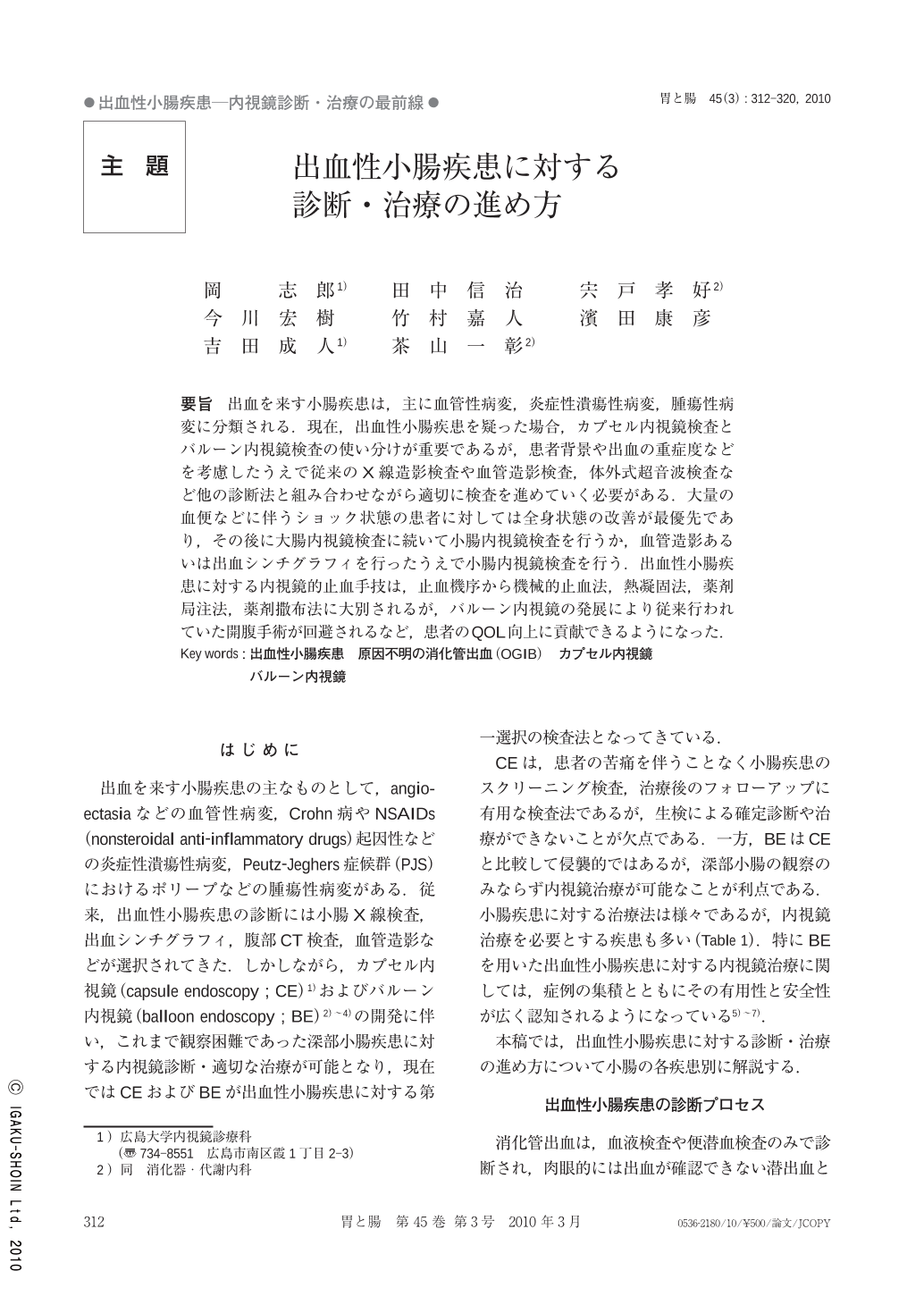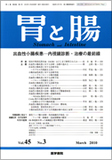Japanese
English
- 有料閲覧
- Abstract 文献概要
- 1ページ目 Look Inside
- 参考文献 Reference
- サイト内被引用 Cited by
要旨 出血を来す小腸疾患は,主に血管性病変,炎症性潰瘍性病変,腫瘍性病変に分類される.現在,出血性小腸疾患を疑った場合,カプセル内視鏡検査とバルーン内視鏡検査の使い分けが重要であるが,患者背景や出血の重症度などを考慮したうえで従来のX線造影検査や血管造影検査,体外式超音波検査など他の診断法と組み合わせながら適切に検査を進めていく必要がある.大量の血便などに伴うショック状態の患者に対しては全身状態の改善が最優先であり,その後に大腸内視鏡検査に続いて小腸内視鏡検査を行うか,血管造影あるいは出血シンチグラフィを行ったうえで小腸内視鏡検査を行う.出血性小腸疾患に対する内視鏡的止血手技は,止血機序から機械的止血法,熱凝固法,薬剤局注法,薬剤撒布法に大別されるが,バルーン内視鏡の発展により従来行われていた開腹手術が回避されるなど,患者のQOL向上に貢献できるようになった.
In this paper, we describe a diagnostic and therapeutic algorithm for obscure gastrointestinal bleeding, including the conventional modalities. Especially, CE(capsule endoscopy)and BE(balloon endoscopy)are very useful and indispensable devices for diagnosis of various diseases in the small intestine. It is important to recognize the types of bleeding(occult, previous overt, and on going)to choose appropriate modalities for the diagnosis of hemorrhage lesions in the small bowel. Hemorrhage lesions in the small bowel are generally classified into 3 groups such as telangiectasia, inflammatory and tumor. Effectiveness and safety of endoscopic treatment(clipping, argon plasma coagulation, injection, polypectomy, etc)using BE for hemorrhagic lesions in the small intestine has been widely recognized as follows : hemostatic procedure, and standardized treatment based on lots of experience and reports.

Copyright © 2010, Igaku-Shoin Ltd. All rights reserved.


